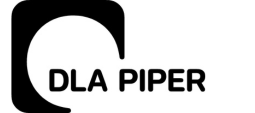Shortly after the Hungarian Competition Authority’s (“HCA”) notice related to fines in antitrust cases came into force on January 1, 2021, the HCA issued an amendment, which came into force on April 22, 2021 (the amended notice being the “New Notice”). The New Notice seems to strengthen the wide derogated powers of the HCA in antitrust cases and may lead to higher fines. However, companies may be able to reduce fine amounts by offering compensating remedies.
The New Notice includes elements that may motivate companies to offer compensation as part of a pro-active remedy instead of paying a fine. Prior to the New Notice, such compensation served to indemnify the persons harmed by the antitrust violation. Now, this compensation may be offered to foster other public interest objectives as well.
Less predictable fine amounts
The notices applicable prior to the New Notice contained detailed guidelines for companies and courts as to the circumstances to be considered by the HCA when determining the precise fine in competition supervision proceedings.
In recent years, the HCA has determined the starting amount of the fine by using a scoring method and assigning minimum starting rates to certain infringements. For instance, with respect to a public procurement cartel, the fine was calculated based on three times the amount of the turnover affected by the violation (typically the value of the winning public procurement bid). The starting amount was 30% of the turnover concerned. This starting amount was then subject to modification based on aggravating or mitigating circumstances. Any such modifications could increase or decrease the starting amount by not more than 75%. A multiple of the amount thus calculated could be imposed as a fine on companies repeatedly committing the same violation.
As a result of the detail contained in the notices applicable prior to the New Notice, companies had a good idea of the fine the HCA might impose before it actually issued its decision. For the sake of legal certainty and predictability, the HCA essentially restricted its own discretion, since it was required in all cases to provide a reason for any deviation from the method of calculating the fine as described above.
Below are the highest fine amounts imposed in antitrust cases in the past three years. These fines were established using the method of calculation described above.
- Vj/20/2017. Restriction on the granting of debt settlement loans, reduction of fixed rate early repayments (recalculation of the fine) - HUF 4,905,000,000
- Vj/19/2016. Public procurement procedures for the procurement of diagnostic imaging apparatus - HUF 1,677,138,000
- Vj/61/2017. Fixing the minimum fee and other terms of temporary employment and personnel recruitment services - HUF 1,000,000,000
- Vj/80/2016. Public procurement procedures for the procurement of neuropacemaker devices - HUF 658,000,000
- Vj/77/2016. Public procurement procedures for the procurement of waste management tools - HUF 559,140,000
The New Notice breaks with the fine calculation method described above. In the New Notice, ratios and percentages are replaced with a list of factors to be considered by the HCA when setting the fine amount. In the New Notice the reasoning provided as to the basis for these factors is brief. For instance, unlike prior notices, the New Notice does not state that certain cases of abuse of dominant position presumably pose only a slight threat to competition and that they therefore should result in the imposition of a lower fine. However, the New Notice does, like its predecessors, provide that the HCA will continue to consider restrictive practices relating to public procurement procedures (e.g., dividing tenders among participants) as particularly serious violations. Furthermore, the New Notice states that the HCA will consider collusion with respect to procedures financed from public funds as a circumstance demonstrating intentional misconduct.
Pro-active remedies
The essence of a pro-active remedy is that the company, which committed the violation, provides either partial or full compensation for the negative impact of the violation in order to obtain a reduction in the fine. The compensation may even result in the removal of the entire amount of the fine. The payment of such compensation does not necessarily reduce the financial burden on the company, it only restructures how that financial burden is allocated.
In recent years, when considering a potential reduction of a fine, the HCA primarily examined whether the compensation to be provided served the well-being of consumers directly affected by the relevant violation or provided indemnification to the companies negatively impacted by the violation. For instance, the indemnification of the entity which wrongly paid a higher purchase price could be deemed a pro-active remedy in the case of a public procurement cartel, and thus a factor in reducing the fine. The impact of the proposed compensation on job creation, market access, foreign trade and tax revenues will also be taken into consideration by the HCA under the New Notice. Similar considerations recently led to the HCA accepting a pro-active remedy in the amount of HUF 1,700,000,000 offered by SPAR Magyarország Kereskedelmi Kft. in a case involving abuse of a dominant position. The compensation aimed at setting up a regional supplier chain, thereby presumably contributing to the expansion of opportunities for local small producers impacted by the improper conduct and to an increase in jobs.
Under the New Notice, the HCA may also consider the positive impact of pro-active remedies on sustainability and environmental protection. Companies may make commitments that are largely unrelated to the violation, if such commitments serve sustainability and environmental objectives. There has not been an example of such a commitment to date. When such a commitment does take place, it will be of interest to examine how the commitment impacts actual fine amounts.
Conclusions
Based on the New Notice, preliminary calculations of fines will become more difficult. In addition, if the reasoning provided for decisions is as general as the reasoning provided in the New Notice itself, the HCA’s fine-setting practices may become less transparent. Such a turn of events may render review of HCA decisions by the courts more difficult.
Extending the application of pro-active remedies provides an opportunity for companies to invest the entire value or a part of the contemplated fine amount into projects that may be useful for both the public and the company itself.
The provisions of the New Notice concerning calculation methodology will be applied as of January 1, 2021 in antitrust cases, where, as of December 28, 2020, no preliminary position has been issued. The provisions of the New Notice concerning pro-active remedies are to be applied as of April 22, 2021 in cases where the preliminary position is issued after December 28, 2020.
By Tihamer Toth, Of Counsel, Tunde Gonczol, Counsel, Aron Karolyi-Szabo, Associate, and Gergely Barnabas, Junior Associate, Dentons




